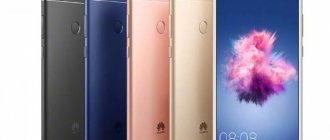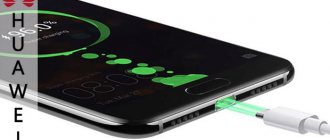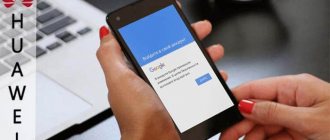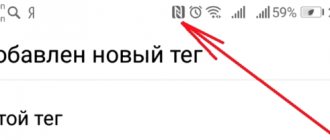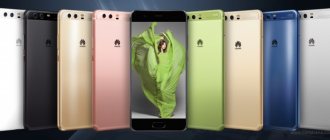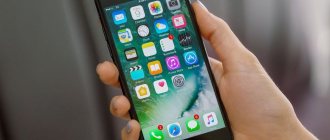To follow modern trends, you simply need a smartphone with a high-resolution camera, a powerful processor, and a large amount of storage. The newer the phone model, the more cool improvements it has. Therefore, when looking for a good gadget, users have a lot of options. If you focus on new products, you may have a choice: Huawei P10 or iPhone 7? The developers have provided both devices with high technical performance, so it is necessary to understand in detail which device is the best.
release date
Let's start with the release date of the devices. iPhone 7 went on official sale at the end of September 2021. The new model, however, like all previous Apple models, caused a great stir. They started booking the gadget on the official website long before the start of sales in order to be the first to get their hands on the new product. Of course, critics immediately appeared and unanimously began to say that the phone was not worth the money and that its price was overpriced due to the brand.
Huawei P10 appeared on the market in February 2021 and also attracted serious attention. Of course, the developers have equipped the new model with two modern cameras that simply impress with the quality of the photographs. This gadget can compete even with the development from Apple.
Equipment
There is nothing interesting to expect in terms of configuration. Everything is quite banal, with the exception of a few accessories.
Here's a list of what you'll find included with the Huawei P10 and iPhone 7:
- Charging cable and, of course, the charger itself;
- Instructions for use of the gadget;
- A special clip for convenient removal of the SIM card slot;
- Stereo headset in the form of wired headphones. For iPhone, these are the popular EarPods.
Now to the differences. In the case of the Huawei P10, you can thank the developers for pasting a basic protective film onto the smartphone screen. It's a small thing, but nice.
Apple developers are also generous this time. They added a mini adapter as standard that can be used for headphones. However, it is worth noting that the wire turned out to be quite flimsy. But still, at least something new.
Cloudy day, bright colors
The very first frame – and immediately disappointment in the Chinese flagship.
When shooting against a fairly light sky, the Huawei P30 Pro camera tries to darken the image as much as possible, failing to cope with the contrast. Yes, the sky turned out better, but at the cost of overall darkening of the image.
The iPhone 11 Pro conveyed the colors of the statue as truthfully as possible, sacrificing the color of the sky - it simply falls into a pure white background. In both cases, I tapped on the screen, focusing specifically on the statue.
Both smartphones handle bright colors differently. Huawei simply twists the colors, so the photos turn out too juicy.
Some people like this particular color rendering; in Asian countries they like eye-catching colors. But this is strictly not for everyone.
The iPhone, on the other hand, takes photos with an eye-pleasing warmth. It’s nice to look at this shot and there’s no blood flowing from the eyes.
Although, in Huawei's defense, I can say that in real life the colors were just that bright, so in terms of truthfulness, the P30 Pro did a better job.
I suggest you guess the next pair of photos yourself, which pigeon was photographed on the iPhone 11 Pro, and which on the Huawei P30 Pro. Choose with your heart!
Each photo was taken with 5x zoom.
And here is the crop, compare:
Options:
- Photo No. 1 - iPhone, No. 2 - Huawei
- Photo No. 1 - Huawei, No. 2 - iPhone
56%
Photo No. 1 - iPhone, No. 2 - Huawei
44%
Photo No. 1 - Huawei, No. 2 - iPhone
340 voted
The correct answers will be at the end of this article, don’t look ahead 
Here are some more bright colors on a neutral green background. I like the iPhone photo better:
And in the next photo, Huawei went crazy, remembered rave parties and came up with something completely absurd. This is what the world looks like on ultra settings in Chinese:
Huawei P30 Pro
The same flower, but performed by the iPhone 11 Pro, looks much more natural and natural:
Let's face it: both smartphones take great photos, but each has its own signature.
If Huawei constantly tries to correct the white balance and often makes mistakes, then the iPhone copes with this task much more professionally:
In general, in daylight, both smartphones cope well with photography. My subjective opinion is that Huawei’s beautifier does more harm than good. iPhone 11 Pro photos capture colors more accurately and blur backgrounds more beautifully.
Let's move on to the width.
Design
It’s best to start comparing Huawei P10 and iPhone 7 with appearance. It is the design that first of all pays attention to the buyer. They can both attract attention and repel.
The new iPhone model has undergone minor design changes. The plastic strips that were previously placed on the back of the smartphone were placed on the ends. This had a positive effect on the overall appearance.
iPhone 7
In addition, new iPhone 7 colors are now on sale - matte black and onyx black. The second option can only be found on devices with 128 and 256 GB of permanent memory. It is worth noting that reviews of the matte version are very enthusiastic. Users talk about the laconic and strict design.
Another advantage of the new look of the iPhone 7 is convenience. Previous models constantly slipped out of the hands due to the too smooth back panel. You can easily carry iPhone 7 without a case. The likelihood of dropping it is much less.
The camera in the iPhone 7 is also located much more conveniently. She stopped clinging to jeans pockets due to the change in the eye.
The most important innovation in the iPhone 7 is water resistance. According to the developers, the device can now be underwater without serious consequences. But to be completely frank, the developers can talk a lot, this does not mean that everything should be taken literally and take a bath with your iPhone every day. It's like playing with fire, or in this case, with water.
iPhone 7
The first thing that distinguishes the Huawei P10 from its opponent is the colors for every taste. There are no specific frames; there is a wide variety of shades available. Users are accustomed to the fact that most smartphones come in only two or three types, but here a bright creative person has plenty to choose from.
The body of the Huawei P10 itself is made of aluminum, however, like most gadgets in this class, and the front side has 5D glass.
In the basic configuration of the P10, a protective film is glued to the screen, but you shouldn’t expect much from the factory protection: it catches all scratches and after a month of use it already becomes unusable.
The back panel is not at all resistant to mechanical damage and after a short time of rubbing against any other object, for example, keys in your pocket, it becomes covered with abrasions and scratches. If you immediately put on the protective cover, you can prevent damage.
Huawei P10
Audio
Both smartphones are equipped with two external speakers: one of which is located on the bottom edge, and the second is combined with the earpiece. However, in the Huawei P10 Plus they do not sound with the same power, although they are quite loud, creating an incomplete stereo effect. The iPhone 7 Plus is more honest in this regard; it has two speakers playing at the same volume.
However, the iPhone 7 Plus does not have a 3.5mm headphone jack, which still creates inconvenience for users. In the P10 Plus, despite the smaller body size and thickness, there was still room for a 3.5 mm jack.
Display
The characteristics of the iPhone 7 with regards to the display have not budged much:
- Diagonal in inches - 4.7;
- Resolution in pixels - 1334x750;
- Oleophobic coating against fingerprints;
- Supports multiple clicks - multi-touch;
- The brightness adjustment for lighting is, as always, at the level.
There is one more small advantage - the volume of the picture. This is achieved due to the expanded color gamut. The predominance of warm shades is also noticeable. It’s strange that the developers, when releasing a new model, do not want to increase the screen resolution at all. Although, on the other hand, they can also be understood: this will cost too much, and the result in the end will be almost invisible.
It’s quite difficult to say that the iPhone is better than the Huawei P10 in terms of display. The Chinese smartphone has a screen diagonal of 5.1”. And in terms of resolution, the P10 is significantly superior to its competitor - 1080x1920.
Huawei P10's automatic brightness adjustment is not very good. When indoors, the screen becomes too dim. But on the street it performs quite well. But the oleophobic coating is completely absent. Because of this, fingerprints will inevitably remain on the display. It is simply impossible to walk without protective film.
The advantages of P10 include high color rendering. There is also a very useful function in the settings - choosing a color scheme. If your eyes are tired of the display, you can adjust the shades for more comfortable use. Another nice bonus is the glove mode. When this mode is activated, the screen becomes more sensitive.
Phone comparison - select the smartphones you want to compare
Comparison - Huawei P20 vs Apple iPhone 7
Huawei P20 is a 2021 smartphone with a weight of 165 g and dimensions of 149.1 x 70.8 x 7.7 mm.
It has a 5.8-inch screen, 12 megapixel camera and 128 GB, 4 GB RAM. Its Octa-core processor (4×2.4 GHz Cortex-A73 & 4×1.8 GHz Cortex-A53) Apple iPhone 7 is a 2021 smartphone with a weight of 138 g and dimensions of 138.3 x 67.1 x 7.1 mm. It has a 4.7-inch screen, 12 megapixel camera and 32/128/256 GB, 2 GB RAM. Its processor is Quad-core 2.34 GHz (2x Hurricane + 2x Zephyr)
For a detailed comparison of all features, see the table below.
or
| General characteristics | |||
| Make and model | Huawei P20 | Apple iPhone 7 | |
| release date | 2018, March | 2016, September | |
| Dimensions (HxWxD) | 149.1 X 70.8 X 7.7 mm | 138.3 X 67.1 X 7.1 mm | |
| Weight | 165 g. | 138 | |
| Frame | Glass front and back, aluminum frame | Glass front panel, aluminum body | |
| Colors | Twilight, Black, Midnight Blue, Pink Gold | Jet Black, Black, Silver, Gold, Rose Gold, Red | |
| Battery | 3400 mAh, Unchangeable, Li-Po | 1960 mAh, Unchangeable, Li-Ion | |
| Battery life | Talk time - Up to 14 hours (3G) Audio playback - Up to 40 hours | ||
| Approximate price | 440 EUR | 550 EUR | |
| Display | |||
| Technologies | LTPS IPS LCD | LED-backlit IPS LCD | |
| Touch screen | yes, capacitive | yes, capacitive | |
| Color depth | 16M | 16M | |
| Size (Diagonal) | 5.8″ (inches) | 4.7″ (inches) | |
| Screen area | 84.9 cm2 | 60.9 cm2 | |
| Ratio (height:width) | 18.7:9 | 16:9 | |
| Ratio (screen:body) | 80.4% | 65.6% | |
| Resolution (pixels) | 1080 x 2240 px | 750 x 1334 px | |
| DPI | 429 PPI | 326 PPI | |
| Screen protection | Ion-strengthened glass, oleophobic coating | ||
| Other | — Wide color gamut -3D Touch display & home button | ||
| Cameras and video | |||
| Rear camera, main | 12 MP, Dual camera | 12 MP, Single camera | |
| Characteristics | -12 MP, f/1.8, 27mm (wide), 1/2.3", 1.55µm, OIS, PDAF & laser AF -20 MP B/W, f/1.6, 27mm (wide), 2x lossless zoom, PDAF | -12 MP, f/1.8, 28mm (wide), 1/3", OIS, PDAF | |
| Functions | Leica optics, LED flash, HDR, panorama | Four-tone LED dual-tone flash, HDR | |
| Video recording | [email protected] , [email protected] , [email protected] (gyro-EIS), [email protected] | [email protected] , [email protected] /60/120fps, [email protected] | |
| DxOMark main result | 102 | 85 | |
| DxOMark photo result | 107 | 85 | |
| DxOMark video result | 94 | 85 | |
| Front camera, selfie | 24 MP, Single camera | 7 MP, One camera | |
| Characteristic | -24 MP, f/2.0 | -7 MP, f/2.2, 32mm (standard) | |
| Functions | Face detection, HDR, panorama | ||
| Characteristic | [email protected] | [email protected] | |
| Productivity | |||
| Operating system (OS) | Android 8.1 (Oreo), upgrade to Android 9.0 (Pie); EMUI 8.1 | iOS 10.0.1, update to iOS 12.1.3 | |
| Chipset | — Hisilicon Kirin 970 (10 nm) | — Apple A10 Fusion (16 nm) | |
| Central Processing Unit (CPU) | — 8 core (4×2.4 GHz Cortex-A73 + 4×1.8 GHz Cortex-A53) | — 4 core 2.34 GHz (2x Hurricane + 2x Zephyr) | |
| Graphics Processing Unit (GPU) | — Mali-G72 MP12 | - PowerVR Series7XT Plus (six-core graphics) | |
| External memory card | No | No | |
| Inner memory | 128 GB, 4 GB RAM | 32/128/256 GB, 2 GB RAM | |
| Antutu 8 result | 235257 | 218894 | |
| Antutu 7 result | 207282 | 178965 | |
| GeekBench 5 Single Core result | 729 | ||
| GeekBench 5 Multi-Core result | 1289 | ||
| GeekBench 4 Single Core result | 1891 | 3410 | |
| GeekBench 4 Multi-Core result | 6712 | 5745 | |
| GeekBench 4 Battery result | 1927 | ||
| Communication and communication | |||
| SIM card | Single SIM (Nano-SIM)Dual SIM (Nano-SIM, dual standby) | Nano-SIM | |
| Net | GSM/HSPA/LTE | GSM/CDMA/HSPA/EVDO/LTE | |
| Show all network frequencies: | |||
| Frequencies | -2G - GSM 850 / 900 / 1800 / 1900 - SIM 1 & SIM 2 (dual-SIM model only) -3G - HSDPA 850 / 900 / 1900 / 2100 -4G - LTE | -2G - GSM 850 / 900 / 1800 / 1900 - A1660, A1778 CDMA 800 / 1900 / 2100 - A1660 -3G - HSDPA 850 / 900 / 1700(AWS) / 1900 / 2100 - A1660, A1778 CDMA2000 1xEV- DO&TD- SCDMA - A1660 -4G - LTE band 1(2100), 2(1900), 3(1800), 4(1700/2100), 5(850), 7(2600), 8(900), 12(700), 13(700), 17(700), 18(800), 19(800), 20(800), 25(1900), 26(850), 27(800), 28(700), 29(700), 30(2300), 38(2600), 39(1900), 40(2300), 41(2500) - A1660, A1778 | |
| Internet speed | HSPA 42.2/5.76 Mbps, LTE-A (3CA) Cat16 1024/150 Mbps | HSPA 42.2/5.76 Mbps, LTE-A (3CA) Cat9 450/50 Mbps, EV-DO Rev.A 3.1 Mbps | |
| GPRS | Yes | Yes | |
| Edge | Yes | Yes | |
| WiFi | Wi-Fi 802.11 a/b/g/n/ac, dual-band, WiFi Direct, hotspot | Wi-Fi 802.11 a/b/g/n/ac, dual-band, hotspot | |
| GPS | Yes, with A-GPS, GLONASS, GALILEO | Yes, with A-GPS, GLONASS, GALILEO, QZSS | |
| NFC | Yes | Yes | |
| USB | 3.1, Type-C 1.0 reversible connector | 2.0, proprietary reversible connector | |
| Bluetooth | 4.2, A2DP, LE, EDR, aptX HD | 4.2, A2DP, LE | |
| Harmful radiation | SAR - 1.19 W/kg (head) 1.19 W/kg (body) SAR EU - 1.38 W/kg (head) 1.34 W/kg (body) | ||
| Music and audio | |||
| Radio | No | No | |
| Headphone jack | No | No | |
| Other | — 32-bit/384 kHz sound - Active noise reduction with a special microphone | — Active noise reduction with a special microphone — Stereo speakers | |
| Other Additions | |||
| Sensors | — Fingerprint scanner (Front panel), accelerometer, Gyroscope, proximity sensor, Compass, color spectrum | — Fingerprint scanner (Front), accelerometer, gyro, proximity sensor, compass, barometer | |
| Other Addons | — Fast battery charging — Dust-splash resistant | - Siri natural language and dictation commands - Water and dust protection IP67 (up to 1m for 30 min) -Apple Pay (Visa, MasterCard, AMEX certified) | |
Comparison video - not found
Huawei P20 vs Apple iPhone 7
Share Share
Sound
As for the sound characteristics, the iPhone has always maintained a certain brand and had a clear sound. “Seven” in addition received a couple more properties, one of which can undoubtedly be classified as positive, but the second depends on how you look at it.
The appearance of a second external speaker is definitely a plus. One is placed in the same place - below. The second one is designed for conversations. Thanks to this, the sound became even clearer and a little louder.
The developers considered the headphone jack unnecessary and removed it completely. They cited the fact that the connector simply takes up extra space in the case, which could be useful for something more useful. For example, the seventh iPhone's battery capacity increased slightly due to its absence. You can listen to music in a wired headset, but with the help of a special adapter cable, which, fortunately, is included in the kit. This feature is difficult to assess unambiguously.
iPhone 7
The only good thing is that there is no need to complain about the sound quality. Everything works smoothly and cleanly.
The Huawei P10 is not inferior to its competitor in terms of sound purity. But the built-in speakers are a big let down: the sound volume is not impressive. Huawei can be equated to one of the quietest smartphones.
The wired headset is also not of particular quality. When connecting, interference appears, although small, but because of this, the sound quality is lost.
The only advantage is the built-in music player. True, it has minimal functionality: folders, albums and songs.
Huawei P10
Appearance of Huawei P10 vs iPhone 7
When comparing the appearance of both flagships, the question immediately arises: “who is pretending to be whom?” In my opinion, the conclusions are obvious. If we compare the dimensions of the cases and weight, then:
- iPhone 7 – 138.3 x 67.1 x 7.1 mm and weight 138 grams
- Huawei P10 – 145.3 x 69.3 x 7 mm and weight 145 grams
The iPhone has a body made of aluminum; the Huawei flagship also has a metal lid with a pleasant texture. Color design:
- iPhone 7 - Jet Black, Black, Silver, Gold, Rose Gold, Red
- Huawei P10 – Mystic Silver, Rose Gold, Graphite Black, Dazzling Gold, Dazzling Blue, Greenery
In my opinion, the P10 body only repeats the iPhone 7 and cannot be called unique, but in terms of the variety of color options, I like the P10 more.
Cameras
The camera is one of the main features of new devices. It is necessary to compare the cameras of Huawei P10 and iPhone 7, as there are several interesting points here.
The front camera of the iPhone 7 has a good resolution - 7 megapixels and a new built-in module, making self-portraits even brighter and higher quality.
The main camera, oddly enough, is inferior in shooting quality to previous models. Its resolution is 12 megapixels. But you can't say that from the image. If the lighting is standard (we don’t take into account evening time), then older iPhones will produce much richer images. And that's a fact. But the night mode on the iPhone 7 is quite good. It has good built-in high-aperture optics and a stabilizer - a complete set for shooting in low light. The background blur function has been noticeably improved.
iPhone 7
That's probably all. What does P10 have to offer?
In terms of front camera resolution, Huawei has an advantage, albeit a small one - 8 megapixels. The main camera is a dual version with resolutions of 20 megapixels and 12 megapixels. All modes and settings are extremely clear. Thanks to the two main cameras, the background is blurred very naturally, and the focus point can be moved even after the photo has already been taken. The only thing you need is high frame sharpness.
The main camera of the Huawei P10 takes excellent photos in the light, but in the dark you can’t count on a beautiful shot. The light sensitivity is not enough for this.
A comparison of the Huawei P10 and iPhone 7 cameras shows that each user first needs to decide what kind of photos he wants to take, in what lighting, etc., and then decide which model is most suitable for this.
Camera comparison
Smartphones differ significantly in their cameras. The P20's rear camera consists of two sensors, while the P30's has one more sensor added. The P20's aperture is f/2.2, while the P20's aperture is improved to f/1.8.
| Huawei P20 Lite | Huawei P30 Lite | |
| Photo resolution | 4608 x 3456 | 5632 x 4224 |
| Video resolution | 1920x1080p | 1980×1080p |
| Video frequency | 30 fps | 30 fps |
| First sensor | Sensor ½.4", pixel 1.25 nm | 48 MP, ½.9 sensor, 1.25 nm pixel |
| Second sensor | 2 MP, f/2.4 | 8 MP (wide-angle lens), f/2.2, 120° viewing angle |
| Third sensor | — | 2 MP, f/2.4 |
A 2 MP sensor is installed to measure shooting depth. Therefore, not a third, but a second wide-angle lens can be considered additional. It significantly expands the capabilities of the rear camera for shooting in difficult conditions. The range of camera functions is practically the same. Artificial intelligence is used here, which is used in scene selection and face recognition. Digital zoom. You can manually adjust white balance and ISO. There is autofocus.
The front camera of the P20 has a resolution of 16 megapixels, the P30 has a resolution of 3.2 megapixels. Both have an aperture ratio of 2.0. They can shoot video at 1920x1080p resolution. There is no autofocus.
Memory and memory card
There are no complaints about the iPhone 7 when it comes to memory. Everything repeats itself from year to year, from model to model:
- The device's RAM is 2 GB;
- Depending on the price category, all iPhones are classified according to the amount of permanent memory: 32 GB, 128 GB and 256 GB. Each user can choose a model to suit their needs;
- As always, there is no slot for additional storage in the form of a memory card.
IPhone 7
P10 offers in return:
- 4 GB of RAM, which makes the device work smoother and more stable;
- The smartphone has built-in memory of 32, 64 and 128 GB, depending on the price;
- If necessary, you can expand the storage using a memory card up to 256 GB.
Huawei P10
Autonomy
The iPhone 7 Plus has a 2900 mAh battery, and the Huawei P10 Plus has a 3750 mAh battery. Due to the lack of identical test utilities for checking battery life on Android and iOS, we set the brightness of both smartphones to 200 cd/m2 and started playing a live video broadcast on YouTube on the same Wi-Fi network. As a result, the iPhone 7 Plus lasted 6 hours 14 minutes, and the Huawei P10 Plus lasted 7 hours 16 minutes. As you can see, the test results are not significantly different; in medium load mode, both smartphones provide a little more than one day of battery life.
It takes 2.5 hours to fully charge the iPhone 7 Plus. Huawei P10 Plus supports fast charging, but only proprietary SuperCharge (5V and charge current up to 4.5-5A), and charges in 1.5 hours.
Sensors
Regarding sensors, as always, the standard list on both devices:
- Magnetic compass;
- Gyroscope;
- Accelerometer;
- Proximity sensor for timely blocking;
- Light sensor to automatically adjust display brightness;
- Fingerprint scanner.
Huawei P10
Connection
What can we say about communication? Both smartphones are completely identical in this matter. All signals are received and transmitted clearly:
- 2G;
- 3G;
- 4G;
- LTE
- GPRS.
Smaller copies of SIM cards - Nano SIM - have come into fashion. Therefore, you should not be surprised that both Huawei and iPhone work with this version of SIM.
iPhone 7
Comparison of Huawei p20 lite (2021) and Huawei p30 lite
3G network
HSDPA 850, 900, 1700(AWS), 1900, 2100
HSDPA 850, 900, 1900, 2100 – global version; HSDPA 850, 900, 1700(AWS), 1900, 2100 – Canada
4G network
LTE frequency bands 1(2100), 3(1800), 4(1700/2100), 5(850), 7(2600), 8(900), 20(800)
LTE frequency bands 1(2100), 3(1800), 5(850), 7(2600), 8(900), 28(700), 34(2000), 38(2600), 39(1900), 40( 2300), 41(2500) – global version; LTE frequency bands 1(2100), 2(1900), 3(1800), 4(1700/2100), 5(850), 7(2600), 8(900), 12(700), 17(700), 28(700), 66(1700/2100) – Canada
Battery life and performance
The most important characteristic when buying a new gadget is its performance. Nobody wants to suffer with lags and freezes after a month of work. Therefore, you need to monitor this indicator carefully.
iPhone 7 has a 4-core processor with a core frequency of 2.34 MHz and a 6-core graphics chipset.
The battery capacity of the “seven” is 1960 mAh. If you look at older iPhone models, this is a relatively good indicator. Moreover, we must take into account that the battery size is already increased due to the lack of a headphone jack. It’s scary to think what would have happened in the end if the wired headset had been left as the basic one.
Generally speaking, compared to older versions, iPhone 7 has increased in performance and speed. At first glance, all applications launch without problems and very quickly. But, judging by the reviews, after some time the device still occasionally freezes. It is quite possible that the fault lies not with the processor, but with the IOS system itself.
A comparison with the “seven” from Apple showed that the Huawei P10 is clearly in the lead. The Chinese smartphone has an eight-core processor: four cores operate at a frequency of 2.4 MHz, and four more have a frequency of 1.8 MHz.
The Huawei P10 battery has a capacity of 3200 mAh. This is almost one and a half batteries of an Apple device.
Briefly about the operation of the Chinese device: despite good RAM and a very powerful processor, Huawei sometimes overheats and begins to experience lags. But overall the device is decent.
Huawei P10
operating system
Apple developers, as always, do not deviate from their ideas and continue to create models on the iOS platform. What is remarkable about this system? A short list of features looks like this:
- Intuitive menu. Simple interface;
- Low battery consumption. The battery drains quickly due to the use of cellular data and other Internet applications. If you disable data transfer, the system will consume a small percentage of the charge;
- Practicality. The system is very well thought out and provides users with more advanced software;
- Cloud storage. If the user uses several Apple gadgets at once, it is convenient to place all files in the “cloud” and have access to them from any of the Apple devices;
- Backup. If suddenly something goes wrong in the operation of the gadget, this will avoid data loss;
- Wireless networks such as WI-FI work automatically;
- Designed for many tasks. Consequently, it spends a minimum of resources on minimized applications.
iPhone 7 came out with the already updated iOS 10 operating system.
Huawei P10 runs on the standard Android 7 system with the proprietary EMUI 5 shell. Its features:
- Openness. This is an advantage for advanced users who like to experiment with firmware;
- Possibilities. It is quite interesting to work with this system, but only on condition that you have some knowledge about it. The OS has wide functionality, but is very lacking in intuitiveness;
- A large amount of free software is freely available.
Performance
The Huawei P20 has almost the same specs as the P20 Pro (octa-core Kirin 970 processor, 128GB of non-expandable storage), but it has 4GB of RAM instead of six. Despite the fact that the P20 is inferior to some flagships in synthetics, its result in GeekBench is 1886 points in the single-core test and 6728 points in the multi-core test, while the Galaxy S9 scores 9 thousand points in multicore, and the iPhone X scores 10 thousand, this smartphone is easily copes with any tasks and has a solid performance reserve for the future. The smartphone runs any games without lags or fps drops at maximum settings, but gets a little warm during gaming sessions. Applications load quickly, the interface works smoothly - in general, everything you expect from a top-end flagship is here.
P20 runs Android 8.1 operating system. The proprietary EMUI shell has never received rave reviews from users, but we must admit that it has improved significantly with the latest versions. The interface is not overloaded; by default, all application icons are located on the desktop in iOS style, but menus can be added in the settings. There are several branded applications from Huawei like Health, HiCare or AppGallery (analogous to the Play Market), but not all of them are deleted. Separately, we note the well-implemented multitasking mode, which allows you to work with two applications simultaneously, placing them in different halves of the screen.
Price
A detailed comparison of Huawei P10 and iPhone 7 helps you figure out which model to prefer. The issue of price, as a rule, plays a decisive role.
As for the pricing policy, iPhone 7 does not plan to reduce prices for its releases. Each new gadget that comes out costs several times more than the previous one. This time, the user will have to pay 40,000 rubles or more for the model with the smallest memory capacity of 32 GB. A modification with 128 GB of ROM will cost from 50,000, and the largest device in terms of built-in memory will cost 60,000 rubles. But, oddly enough, despite its rather high prices, Apple has a large number of its fans who watch with bated breath the release of each new version, and often breaks records for pre-orders.
Huawei is much more loyal to its customers when it comes to prices. For the P10 model with the lowest memory capacity of 32 GB, you will have to pay 24,000 rubles, for the average volume of 64 GB the price is at 27,000, and for a smartphone with a memory of 128 GB, the user needs to pay 42,000 rubles. Such affordable prices allow Huawei developers to be leaders in the flagship segment.
Why is it better to buy an iPhone than an Android?
Android smartphones are still perceived as something cheap and not as high quality as the iPhone
I understand perfectly well that 90 thousand for a smartphone is a lot. Therefore, it is obvious that many will take such a device either on credit or in installments. But just imagine how you will tell your loved ones or friends about this. I don’t know about you, but I would be ashamed to say something like that out loud, let alone actually do it. After all, if buying an iPhone on credit is the same norm as, for example, purchasing an apartment with a mortgage, then a loan for Huawei sounds about the same as a loan for a hairdryer or electric kettle. In general, it's a shame.
Huawei is preparing to produce chips to circumvent US sanctions. But not everything is so smooth
Frankly speaking, today almost all Android smartphone manufacturers are trying to catch up and overtake the iPhone. Some people do it better, while others do it worse. But if I would, in principle, be ready to endure these attempts for 20-30 thousand rubles per device, then giving 90 thousand and hoping that Huawei will cope and everything will work out for him somehow does not appeal to me. Therefore, between Huawei Mate 40 Pro and iPhone 12 Pro, I choose the latter. After all, not only does it still remain a reference smartphone even for Apple’s competitors, who continue to focus on it, but also, whatever one may say, there will be fewer problems with it, and it will last longer.
Conclusion
Despite its high price, the iPhone always remains in demand. The good news is that with each new model, developers are trying to correct the shortcomings and release the gadget as best and as modern as possible. If you previously had an older version of iPhone, then by switching to iPhone 7, you will feel a big difference - from the speed of applications to reliable protection from water.
Based on the price category, the P10 is definitely worth the money. It may be inferior in some ways to Apple's product, but that's why it's world famous. The new Huawei model is compared to the recently released Samsung S7.
Both devices - Huawei P10 and iPhone 7 - have their own characteristics. Here the choice will depend directly on what the user expects from the gadget. Perhaps it's high quality photography during the day or good night photography? Waterproof or long battery life? In any case, each of the gadgets is worthy of attention. And which one you ultimately buy is up to you to decide, based on the size of your wallet.


